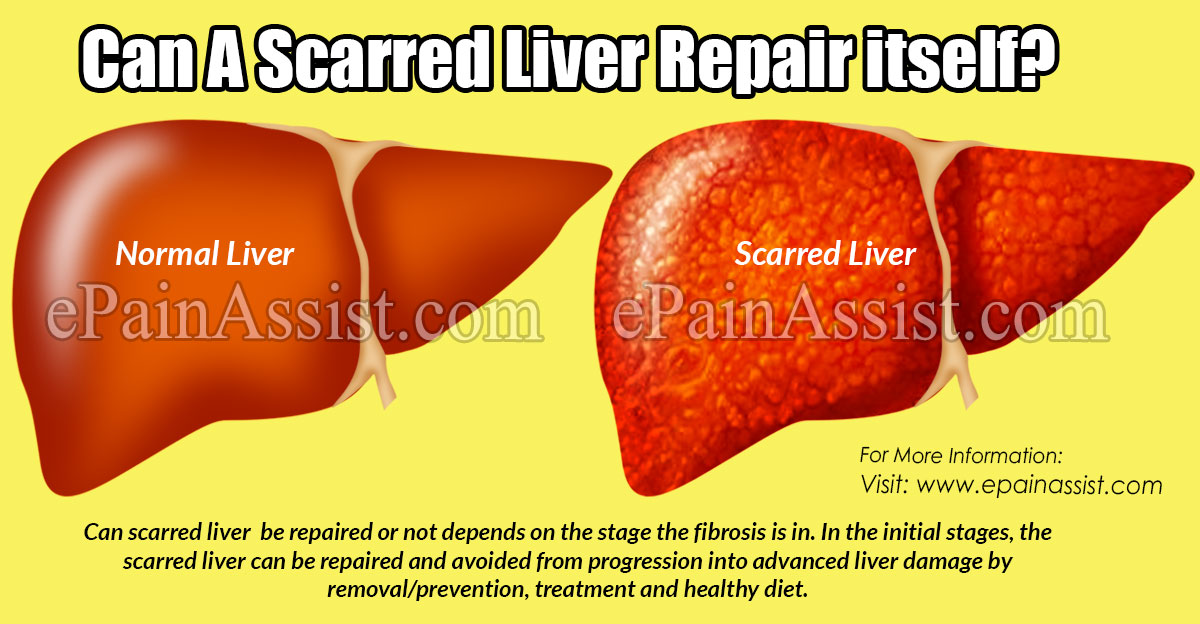Liver scarring is also known as liver fibrosis, which is due to progressive liver inflammation and liver cell death in chronic liver diseases. Liver scarring occurs when liver tries to repair its damaged cells through deposition of new collagen fibers. This deposition of repaired tissue results in scarred tissue or fibrous tissue formation. This exaggerated wound healing response interferes with normal liver function. Liver is supposed to have over 500 functions including protein synthesis, destruction of old RBCs, detoxification and metabolism of chemicals and drugs along with hormone regulation and digestion of fats assisted by the production of bile, to name a few.
What Are The Causes of Liver Scarring?
There are various causes of liver scarring, but the most common causes include chronic alcoholism, chronic viral disease (hepatitis B and C, HIV) and/or fatty liver. Other causes of liver scarring may include hemochromatosis, Wilson’s disease, cystic fibrosis, biliary atresia, glycogen storage disease, Alagille syndrome, autoimmune hepatitis, primary biliary cirrhosis, infection (schistosomiasis), primary sclerosing cholangitis and/or medications such as methotrexate.
Symptoms and Causes of Liver Scarring
Generally liver scarring does not present with any signs of symptoms in the early stages, as the symptoms do not usually occur until severe liver damage has occurred. The signs and symptoms when present include weakness, lethargy, easy bruising and bleeding, pruritis, jaundice and in its advanced stage when progressed into cirrhosis might also include ascites, nausea, vomiting, weight loss, loss of appetite, swelling of legs, enlarged veins in the esophagus and upper abdomen, confusion, excessive sleepiness/drowsiness and coma.
The Stages of Liver Scarring
The stages of liver scarring determine the degree of damage to the liver. The activity or the prediction of how the fibrosis is progressing is done based on a popular scoring system called the METAVIR scoring system. The fibrosis stages range from F0 to F4. F0 stage shows no evidence of scarring, F1 stage is the stage of portal fibrosis without any septa formation, F2 stage has portal fibrosis along with few septa formation, F3 stage is the stage of various septa, but without any cirrhosis, F4 stage is the stage of liver fibrosis. The advanced form of liver fibrosis/scarring is the F3 and F4 stage. Fibrosis when not managed in the initial stages will lead to cirrhosis. Liver cirrhosis is a chronic progression of fibrosis (scarring) of healthy liver tissue leading to functional deterioration of the liver.

Can a Scarred Liver repair itself?
Can scarred liver be repaired or not depends on the stage the fibrosis is in. In the initial stages, the scarred liver can be repaired and avoided from progression into advanced liver damage by removal/prevention, treatment and healthy diet. When causative factors like chronic hepatitis, chronic alcoholism and non-alcoholic liver disease are not removed, liver fibrosis progresses into cirrhosis. At this point the scarring of liver cannot be repaired. It can only be prevented from further progression into liver failure and ultimate death.
Diagnosis is based on physical examination, typical symptoms, blood tests, liver function tests (measuring level of liver enzymes and determining the liver function and presence of damage to the liver). Other tests used are ultrasound, elastography, magnetic resonance elastography and biopsy.
There is no specific treatment to cure liver injury caused by liver scarring and once progressed it cannot be reversed and will lead to liver cirrhosis. However, treating the underlying cause may prevent further progression of the disease, thus avoiding liver cirrhosis, liver failure, and death. Fibrosis from excessive alcohol can be prevented from worsening by alcohol abstinence and prescription medications such as naltrexone and acamprosate and attending support programs such as AA (alcoholics anonymous). Fibrosis related to viral hepatitis is treated with antiviral drugs and also with interferons. Autoimmune hepatitis is treated with corticosteroids; primary biliary cholangitis is treated with ursodiol that slows liver damage. Wilson’s disease is treated with penicillamine, which chelates excess copper stores in the body.
Liver fibrosis/scarring can be further prevented from progression by eating a healthy and well balanced diet and avoiding foods and drinks causing liver damage.
Also Read:
